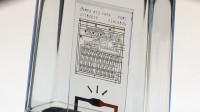The chip destroys itself in 10 seconds “on command”.
PC World reported on the new chip, developed by Xerox PARC (Palo Alto Research Centre) and DARPA (Defence Advanced Research Projects Agency), which “breaks apart on command” and “can self-destruct” in 10 seconds, with the news outlet stating that this provides a “potentially revolutionary tool for high-security applications”. The chip was developed by the OEM and government department as part of DARPA’s vanishing programmable resources project.
The chip, demonstrated at DARPA’s ‘Wait, What?’ event in St. Louis, Missouri, and could “store data such as encryption keys”, then on command “shatter into thousands of pieces so small, reconstruction is impossible”. The technology is based on Gorilla Glass, a new toughened glass “used in the displays of numerous smartphones”, and is “stressed to breaking point by heat”, with a circuit heating up a small resistor that shatters the glass.
Even after the chip is destroyed, “stress remained in the fragments”, which “continued breaking into even smaller pieces for tens of seconds afterwards”. PC World states that the chip is an “exciting prospect” for computer security, because “if a chip fabricated on glass was used to store an encryption key, the destruction of the chip could assure complete destruction of the key in an instant”. While light was used in this case, it could be triggered by mechanics or radio as well.
Gregory Whiting, Senior Scientist at PARC, commented: “The applications we are interested in are data security and things like that. We really wanted to come up with a system that was very rapid and compatible with commercial electronics. We take the glass and we ion-exchange temper it to build in stress. What you get is glass that, because it’s heavily stressed, breaks it fragments into tiny little pieces.”

